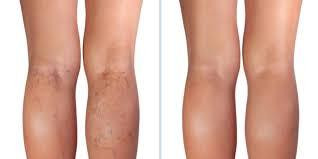What Are The Treatment Options For Varicose Veins?
What are the treatment options for varicose veins? Varicose veins are a common medical condition characterized by enlarged, twisted, and bulging veins, typically occurring in the legs. While varicose veins are often a cosmetic concern, they can also lead to discomfort, pain, and other complications. Fortunately, several treatment options are available to manage and alleviate the symptoms of varicose veins. In this article, we will explore the various treatment options for varicose veins and discuss the role of vein centers in their management.
I. Conservative Measures:
Lifestyle Modifications:
Regular Exercise: Engaging in activities that promote circulation, such as walking or swimming, can help reduce the symptoms of varicose veins.
Weight Management: Maintaining a healthy weight can lessen the pressure on the veins and reduce the likelihood of developing or worsening varicose veins.
Elevating Legs: Elevating the legs above heart level periodically throughout the day can assist in improving blood flow and relieving symptoms.
Compression Therapy:
Compression Stockings: Wearing specially designed elastic stockings helps compress the veins, aiding in blood circulation and reducing discomfort.
Ii. Minimally Invasive Procedures:
Sclerotherapy:
Injection of a Solution: A sclerosing solution is injected into the affected vein, causing it to collapse and eventually fade away.
Suitable for Smaller Veins: Sclerotherapy is particularly effective for treating smaller varicose veins and spider veins.
Endovenous Ablation Techniques:
Laser Ablation: In this procedure, laser energy is directed into the affected vein, causing it to collapse and seal shut.
Radiofrequency Ablation: A thin catheter delivers radiofrequency energy to heat the vein walls, causing them to collapse and close off.
Iii. Surgical Interventions:
Vein Stripping and Ligation:
Traditional Surgical Approach: The affected vein is tied off (ligated) and removed (stripped) through small incisions in the leg.
Suitable for Large Veins: Vein stripping and ligation are typically used for larger varicose veins that cannot be effectively treated with minimally invasive procedures.
Ambulatory Phlebectomy:
Microsurgical Technique: Small incisions are made in the skin to remove segments of the varicose veins.
Appropriate for Surface Varicose Veins: Ambulatory phlebectomy is commonly employed for the treatment of surface varicose veins close to the skin.
Iv. Role Of Vein Centers:
Diagnosis and Assessment:
Comprehensive Evaluation: Vein centers provide specialized diagnostics, including ultrasound imaging, to determine the severity and underlying causes of varicose veins.
Customized Treatment Plans: Experienced healthcare professionals at vein centers develop personalized treatment strategies based on individual patient needs.
Treatment Procedures:
Expertise in Minimally Invasive Techniques: Vein centers employ skilled practitioners who are proficient in performing minimally invasive procedures, ensuring effective and safe treatment.
Access to Advanced Technology: These centers are equipped with state-of-the-art equipment, enabling accurate diagnoses and providing patients with the latest treatment options.
Patient Education and Support:
Information and Guidance: Vein centers offer educational resources to help patients understand varicose veins, treatment options, and self-care measures.
Post-Treatment Care: Vein centers provide post-treatment support and follow-up care to monitor patient progress and address any concerns or complications.
What do vein centers do?
What do vein centers do? Vein centers are specialized medical facilities that focus on the diagnosis, treatment, and management of vein-related conditions, particularly varicose veins. These centers offer comprehensive services to patients with venous disorders, aiming to provide effective and personalized care. Vein centers typically have experienced healthcare professionals, including vascular surgeons, interventional radiologists, and phlebologists, who are specialized in venous diseases.
The primary functions of vein centers include:
- Diagnosis and Assessment: Vein centers use advanced diagnostic techniques, such as ultrasound imaging, to evaluate the severity and underlying causes of varicose veins and other venous disorders.
- Treatment Procedures: Vein centers offer a range of treatment options, including minimally invasive procedures such as sclerotherapy, endovenous ablation techniques (laser or radiofrequency), and surgical interventions like vein stripping and ligation or ambulatory phlebectomy.
- Patient Education and Support: Vein centers provide educational resources to help patients understand their condition, treatment options, and self-care measures. They also offer guidance and support throughout the treatment process.
- Follow-up Care: Vein centers ensure post-treatment care and follow-up appointments to monitor patient progress, address any concerns, and provide ongoing support.
By specializing in venous disorders, vein centers provide comprehensive and expert care, helping individuals manage varicose veins and improve their quality of life.
Conclusion:
When it comes to varicose veins, various treatment options exist to alleviate symptoms and improve the overall appearance of affected veins. Conservative measures and minimally invasive procedures are often the first-line approach, while surgical interventions are reserved for more severe cases. Vein centers play a vital role in the management of varicose veins, offering comprehensive diagnostic services, advanced treatment options, and patient support to ensure optimal outcomes. If you are experiencing symptoms of varicose veins, consult with a healthcare professional or consider visiting a specialized vein center for a thorough evaluation and personalized treatment plan.


Comments
Post a Comment